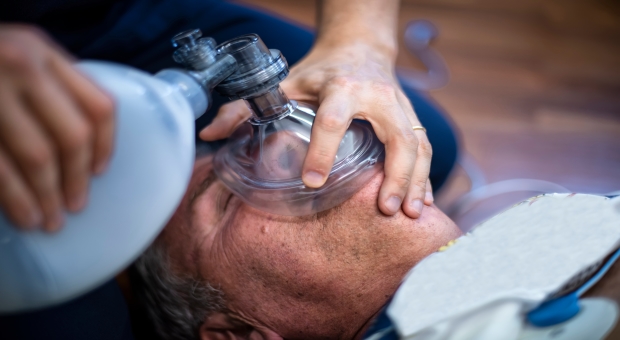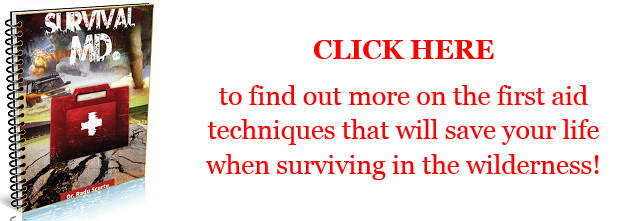Are you familiar with “outdoors horror stories”?
You may know that death from exposure is a relatively common occurrence among hitchhikers, or people getting lost in the woods/in the wilderness without proper equipment, clothing or gear, and so on and so forth. Actually, in most cases, the so-called death from “exposure” is due to shock.
And approximately 2000 people die each year in the US due to weather-related events (extreme cold or heat), not to mention car accidents. All these deaths can be attributed to shock, more or less.
Because, yes, the condition described as “shock” can occur due to a variety of situations: heatstroke, heart failure, hypothermia, trauma, poisoning, a severe allergic reaction, burns, or a combination of 2 or more of these situations. In medical lingo, there are various types of shock, but to keep it simple and make it easier for our readers, we will only refer to what’s being described as traumatic shock, a common condition that follows a serious injury (exposure to cold/heat, dehydration, car accident, severe hemorrhage, spinal injury etc), and it is a consequence of one’s internal organs not receiving an adequate supply of blood.
To sum it up
There are many reasons for which one may go into shock, and also the symptoms can vary from case to case, but generally speaking, they include clammy skin, general weakness, sweating, quick/irregular breathing, fast heart rate (over 100 heart-beats per 60 seconds), a drop in body-temperature, and thirst. There are situations when shock is more dangerous than the injury itself, especially if left untreated.
A person suffering from shock will start to feel confused, then lose consciousness. That’s due to the brain not receiving enough oxygen. In some cases, cardiac arrest may occur, hence treating someone who may be in shock is of utmost importance, especially in an outdoors survival scenario.
Since shock generally occurs due to decreased blood flow, and it makes for a life-threatening condition, to reduce harm from shock and, best of all, to prevent shock from installing in the first place, you should learn how to take care of an injured person properly.
Get this lifesaving information about surviving when doctors, pharmacies and hospitals are shut down!
In outdoors survival scenarios, shock is often associated with severe head injuries and burns, blood loss, trauma and dehydration.
To alleviate shock, or to prevent it, you should treat an injured person as it follows:
- If conscious, the victim must be laid down on a plain surface, with his/her legs elevated, and feet about 1 ft off the ground; the idea is that the legs must be higher than the heart, in what’s known in medical circles as shock position
- If unconscious, the victim must be placed on their stomach or on their side; to prevent choking on blood, vomit or other fluids, the head must be also turned to one side
- If the victim is already in shock, do not attempt to move them
- If the victim’s clothes are wet, remove them
- If it’s cold, use an external heat source (a blanket, an extra-layer of clothing) to keep the victim comfortable; if it’s hot, keep the victim out of the sun by any means necessary, even if it requires moving; never add extra-heat into the equation when it comes to treating shock victims, that’s a no-no procedure, because raising the body’s surface temperature diverts the blood supply from vital organs back to the skin, at the worst possible moment
- You must immediately treat any obvious injuries, including wounds, burns or fractures
- Loosen tight clothing, especially around the neck, chest and waist
- Carefully watch for changes in the victim’s skin color, and monitor his/her heart rate and breathing at regular intervals; make notes if anything changes
- Do not allow the victim to drink nor eat anything
Now, if the victim is bleeding, use a sheet or a towel or something improvised from a T-shirt ,and hold pressure over the wound. Hemorrhages are very dangerous (as in life-threatening) and must be mitigated as soon as possible. If the victim starts bleeding from the mouth, or vomits, turn them onto a side, to prevent them from chocking. Keep in mind that this is a no-no procedure if you suspect the victim of suffering from a spinal injury.
Always remember that when treating someone for shock, your primary objectives are to maintain a proper body temperature, and to improve blood-circulation, in order to provide one’s vital organs with an adequate supply of oxygen. The victim must always be kept laying down, but the position must reflect on his/her injuries. It is very important to not move the victim if you suspect neck/spine injuries, until you’re prepared for proper transportation, unless it’s imperative to provide emergency first-aid or to protect the victim from further (catastrophic, as in a burning-car-wreck) injury.
Victims who have difficulties breathing must be treated with extreme care ,to prevent them from asphyxiating, i.e. they must be placed on their backs, with the head and shoulders raised. Victims who are suspected to suffer from spinal/neck injuries require special treatment, as in their heads must never be lower than the body. If you’re in doubt with regard to the correct position of the victim, considering the injuries and all that, keep it simple: the victim must lay flat.
Keep in mind that providing shock victims with water/other fluids by mouth is forbidden in brain and abdominal injuries, or when the victim is having convulsions or is unconscious. Brain injury victims are often vomiting or unconscious. Water can be given to shock victims if none of the above situations exist, if there’s no chance of medical help arriving the scene for 1 hour or more.
The best solution (if possible) is to hydrate the shock victim with a water solution containing baking soda and salt, neither cold nor hot; half a glass every fifteen minutes, one level teaspoon of salt and half teaspoon of baking soda added to a quart of water.
The ideal scenario would be to administrate fluids to shock victims intravenously, but this is a complicated technique that requires special training and proper gear. And by all means: after providing the shock victim with first aid, seek medical attention ASAP.
That about sums it up for today. I hope you enjoyed reading the article. If you have questions or comments, don’t hesitate to use the dedicated section below. Good luck, have fun folks!












































































Good One, Chris. My E.M.T. Friends would be Proud of you.
It should be noted that the latest protocol for bleeding control is direct pressure, and, if that does not stop the bleeding on an extremity (arm or leg), go directly to a tourniquet. The old direct pressure, then elevation, then pressure point and last resort tourniquet protocol has been found to be ineffective and a waste of time. Stopping severe bleeding ASAP is imperative to reduce blood loss, which can lead to shock.
I’m a bit confused. It clearly says the victim is NOT to be given ANYTHING to eat or drink. Then there is a whole paragraph on giving them water. So which is it?
The paragraph says “providing shock victims with water/other fluids by mouth is forbidden in brain and abdominal injuries”, therefore it’s OK in other situations.
Alex, from Survivopedia 🙂
Keep in mind you can provide fluids via enema .